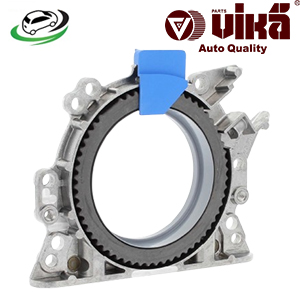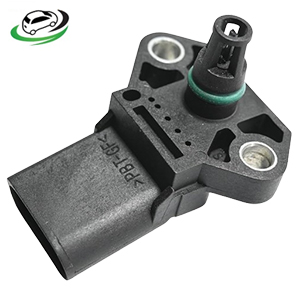-6%
Get Drive Belt Tensioner AUDI A1 (8X1/8XK)/ AUDI A3 (8P1)/ AUDI A4/ AUDI A5 (8T3)/ AUDI TT (8J3)/ VW Amarok/VW EOS (1F7/1F8) 038903315AM
The drive belt tensioner is an essential component of an engine’s accessory belt system, playing a crucial role in maintaining the correct tension on the drive belt. This belt drives various engine accessories, such as the alternator, power steering pump, and air conditioning compressor. Proper tensioning is vital for these components to function efficiently and reliably. In this comprehensive guide, we will explore the function, construction, types, benefits, signs of wear, and maintenance of the drive belt tensioner in detail.
Function of the Drive Belt Tensioner
The drive belt tensioner ensures that the serpentine or V-belt, which drives engine accessories, remains under the correct tension. Its primary functions include:
- Maintaining Belt Tension:
- Constant Pressure: The tensioner applies continuous pressure to the drive belt, preventing it from becoming too loose or too tight. Proper tension is necessary to ensure the belt can transmit power effectively to the engine accessories.
- Reducing Belt Wear:
- Minimizing Slippage: By maintaining appropriate tension, the tensioner helps reduce belt slippage, which can lead to premature wear and tear on the belt and the accessories it drives.
- Absorbing Vibrations:
- Smooth Operation: The tensioner helps absorb engine vibrations and fluctuations in belt load, contributing to a smoother and quieter operation of the accessory belt system.
- Compensating for Belt Stretch:
- Automatic Adjustment: Over time, the drive belt may stretch due to wear and tear. The tensioner automatically adjusts to compensate for this stretching, ensuring that the belt remains properly tensioned.
Components of the Drive Belt Tensioner
The drive belt tensioner is a relatively simple yet crucial component consisting of the following parts:
- Tensioner Arm:
- Material: Typically made of metal, the arm provides the necessary leverage to apply tension to the belt.
- Function: The arm moves in response to the force applied by the tensioner spring, maintaining pressure on the belt.
- Spring:
- Material: Usually a steel coil spring or torsion spring.
- Function: The spring provides the force needed to keep the tensioner arm pressed against the belt, ensuring constant tension.
- Pulley:
- Material: Often made from metal or high-grade plastic, the pulley is mounted on the tensioner arm.
- Function: The pulley contacts the drive belt, guiding it while applying the necessary tension. It may have a smooth or grooved surface, depending on the belt type.
- Base or Housing:
- Material: Typically metal, providing structural support to the tensioner assembly.
- Function: The base secures the tensioner to the engine, anchoring the entire assembly.
- Bearing:
- Material: Usually a metal or ceramic bearing inside the pulley.
- Function: The bearing allows the pulley to rotate smoothly with minimal friction, ensuring efficient operation and longevity.
Types of Drive Belt Tensioners
Drive belt tensioners come in various types, each suited to specific engine designs and requirements:
- Manual Tensioner:
- Design: Requires manual adjustment to set the correct belt tension.
- Application: Used in older vehicle models or specific applications where automatic adjustment is not needed.
- Automatic Tensioner:
- Design: Uses a spring mechanism to automatically adjust the tension as the belt stretches or engine load varies.
- Application: Commonly used in modern vehicles due to its ease of maintenance and consistent performance.
- Hydraulic Tensioner:
- Design: Uses hydraulic pressure to maintain tension on the belt.
- Application: Found in some high-performance or heavy-duty engines where precise tension control is critical.
Benefits of a Properly Functioning Drive Belt Tensioner
A properly functioning drive belt tensioner offers several benefits:
- Ensures Accessory Operation:
- Reliable Performance: By maintaining the correct tension on the belt, the tensioner ensures that engine accessories like the alternator, power steering pump, and air conditioning compressor operate effectively.
- Prolongs Belt Life:
- Reduced Wear: Proper tensioning minimizes the risk of belt slippage or excessive wear, extending the lifespan of the drive belt.
- Reduces Maintenance Costs:
- Prevents Damage: By preventing belt failure, a well-maintained tensioner helps avoid costly repairs or replacements of engine accessories.
- Enhances Engine Efficiency:
- Smooth Operation: A properly tensioned belt ensures that engine accessories operate smoothly, reducing strain on the engine and improving overall efficiency.
- Minimizes Noise:
- Quiet Operation: A functioning tensioner helps reduce noise from the belt system, preventing squealing or rattling sounds associated with a loose or worn belt.
Signs of a Worn or Failing Drive Belt Tensioner
Over time, the drive belt tensioner can wear out or fail due to constant exposure to engine heat, vibrations, and load. Recognizing the signs of a failing tensioner is important for timely maintenance and repair:
- Belt Squealing or Chirping:
- Symptom: Unusual noises, such as squealing or chirping, may indicate that the tensioner is not maintaining proper tension, causing the belt to slip.
- Visible Belt Wear:
- Symptom: If the belt shows signs of wear, such as fraying, cracking, or glazing, the tensioner may not be providing adequate tension, leading to accelerated belt deterioration.
- Belt Misalignment:
- Symptom: If the belt appears to be misaligned or is slipping off the pulley, the tensioner may be failing to maintain proper alignment and tension.
- Engine Accessories Malfunctioning:
- Symptom: If accessories like the alternator, power steering, or air conditioning stop functioning properly, it may be due to insufficient belt tension caused by a faulty tensioner.
- Vibrating or Shaking Tensioner Arm:
- Symptom: A tensioner arm that visibly vibrates or shakes while the engine is running can indicate a weakened or failing spring inside the tensioner.
Maintenance and Replacement
Regular maintenance and timely replacement of the drive belt tensioner are crucial for ensuring optimal engine performance and avoiding potential issues:
- Routine Inspection:
- Visual Check: Regularly inspect the tensioner for signs of wear, damage, or misalignment. Ensure the pulley rotates smoothly without any wobbling or noise.
- Belt Replacement:
- Belt and Tensioner: It’s often recommended to replace the drive belt and tensioner simultaneously, as a worn belt can cause premature tensioner wear and vice versa.
- Listen for Noises:
- Noise Diagnosis: Pay attention to any unusual noises from the engine bay. Squealing or chirping sounds can indicate a failing tensioner or belt.
- Professional Diagnosis:
- Expert Evaluation: If you suspect a problem with the tensioner, have a professional mechanic diagnose and replace it if necessary. Proper installation is critical for ensuring correct tension and alignment.
- Replacement Interval:
- Manufacturer’s Recommendations: Follow the vehicle manufacturer’s recommended intervals for tensioner and belt replacement to prevent unexpected failures.
Follow us on Facebook for more parts.



